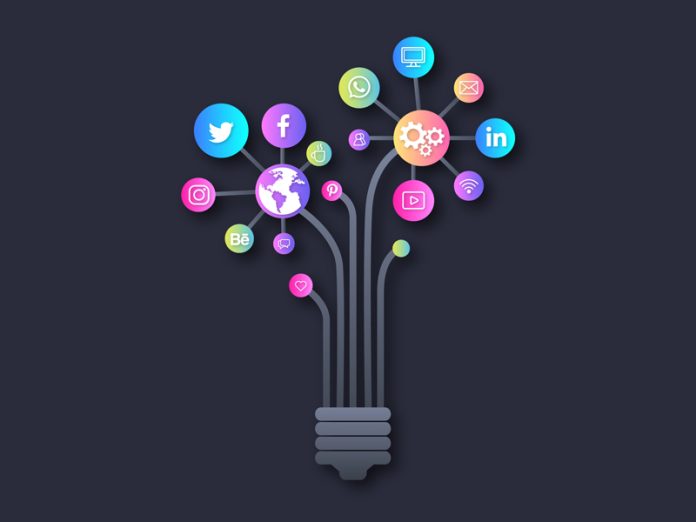If you’re not advertising your brand or product online, it’s invisible to the world beyond your immediate physical community. That’s where digital advertising comes in.
Digital advertising is easily targeted at particular audiences, down to individual level, and tailored to particular audiences who can immediately follow calls to action. It’s an essential part of the larger digital package.
Advertising shows potential customers that you have what they are looking for. Marketing accompanies them on the full journey, identifying what they want, encouraging them to buy and engaging with them after a sale to build and retain their loyalty. Businesses need both to succeed.
Define your market, and target them where they are
Research by text message marketer SlickText shows that people are using their smartphones alone 60% to 80% more than they did before the Covid-19 pandemic lockdowns in 2020 and 2021.
It makes sense, then, to advertise in the digital sphere. It’s where people are spending a large chunk of their time every day.
In 2018, before the pandemic caused worldwide havoc, on average businesses were spending slightly more on digital advertising than television advertising, according to research by Statista, a German online platform specialising in data gathering and visualisation. In 2023, on average, businesses were spending 62% of their advertising budget on internet-based adverts.
But, with upwards of 120 social media platforms to choose from, where does one start? Just as social groups have their own real-world gathering places, they have them on the internet too, and a good place to start is to decide which age group, or age groups, you would like to target.
- For example, people aged 25 to 34 make up the largest age group using Meta’s Facebook – 29.9% of the platform’s 2.96-billion monthly active users, according to social media management platform Sprout Social. If you’re looking to target those between the ages of 18 and 24, it’s Meta’s Instagram that you should go for as this demographic comprises 30.8% of the platform’s two billion users.
- Don’t let all the turmoil at X (formerly Twitter) scare you away. It’s still the best platform for building brand awareness, especially among those aged 18 to 29.
- If it’s a younger generation you’re after and you have a fun-filled brand to promote, Sprout Social estimates the TikTok community at between 843-million and more than one billion, with the largest age group being 18 to 24 (21%).
- Another platform that shouldn’t be overlooked is LinkedIn, which is the best spot if your product or service is business-oriented, or if you are a non-profit organisation looking for corporate donors. There are more than 930-million professional people on LinkedIn, 63% of them using the platform weekly. One of the best ways to use LinkedIn is through “conversation ads” – messages sent directly to an individual on the platform. Using LinkedIn’s data, these can be targeted at individuals who are likely to be interested in whatever it is that is on offer. The proof is in the pudding – these adverts have a 60% “click rate”, meaning 60% of recipients open them.
It pays to pay
While you can use your social media feed to advertise for free on social media, one of the most effective ways to ensure eyes see your advertisement on social media is to put a little (or a lot of) money into it.
What is commonly called “paid advertising” is not as expensive as many believe. Even a small budget increases your advert’s visibility on the platform of your choice. Pleasingly, results are seen quickly too, and everything is measurable, so you can easily see the return on investment.
Also, because everything online is so easily amendable and measurable, you can use what you learn from the built-in analytics tools to quickly work out what is effective and amend your approach accordingly.
Beyond social media – search engines
While social media is arguably the most obvious and prominent place to advertise online, there are other places to advertise on the internet.
It’s true that there has been a rush to use artificial intelligence chatbots such as ChatGPT to search for information, but they have limitations when it comes to customers finding products and services. For those, people still go to search engines such as Google, Safari and, in the United States, Yahoo and Bing.
The joy of advertising on search engines is that you can target your advertising to people who are already searching for what you are selling. Also, potential customers can immediately follow your calls to action, something they simply cannot do with an advert on a billboard or in a magazine.
Plus, you can track everything, including how many people potentially saw a particular advertisement (impressions), how many clicked on it and how many made an actual transaction. It gets better: advertisers can gather demographic data about the people who took these actions, and that can enable you to better target your advertisements to those who are already interested.
There’s added flexibility, too. You can extend or terminate spending on a particular advert, and you can amend the artwork as you go. This helps you control costs.
Get digital advertising
All in all, whether or not you choose to spend on physical advertising, digital advertising needs to be part of your marketing plan. It simply makes sense.





